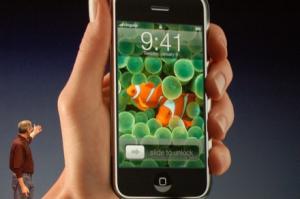This is the first time I’ve been back in the States since the iPhone was released, and after getting a chance to play with one yesterday, I decided I had to go out and buy one today. The problem is that AT&T-locked JesusPhone doesn’t work in Germany without a little bit of hackery, and Apple’s just-released-last-week 1.1.1 firmware is reported all over the internet to brick hacked iPhones. Would an AT&T store in Mount Pleasant, SC turn over so many iPhones that they would already be selling boxed 1.1.1 models?
South Carolina isn’t exactly a technology hotspot, so I took a bet that I could buy a boxed iPhone with an older, perhaps original 1.0, firmware (flip-flops and sundresses, on the other hand, sell like hotcakes here). I won my bet and within an hour of getting home, I had a completely unlocked iPhone with a myriad of cool unofficial apps, thanks to tools like iBrickr and PACAY. My new iPhone now has a youtube viewer, OpenSSH, BSD utilities, a wifi stumbler, flickr uploader, and a completely cool Over The Air application installer.
The device is incredibly well built and solid. It’s smaller than I had imagined, but the screen is definitely adequate for browsing. The touch screen obviously lacks tactile feedback, but it’s also the most accurate touch interface I’ve ever used. I’m able to type much faster than I ever could using normal keys and T9.
With it unlocked and freed from Apple’s proprietary grip, the iPhone is very special. Free and open source software on such a beautiful piece of hardware is very exciting, but when Apple sets out to hamper such innovation and creativity, I can’t help but think of their past mistakes with closed systems. Things could have turned out very differently had MacOS been a little more open early on, and things may very well turn out similarly if Apple doesn’t change their ways. Here’s to hoping Google’s gPhone will be the IBM PC to Apple’s II.
Highly useful link: Unlock your iPhone using the latest AnySIM


